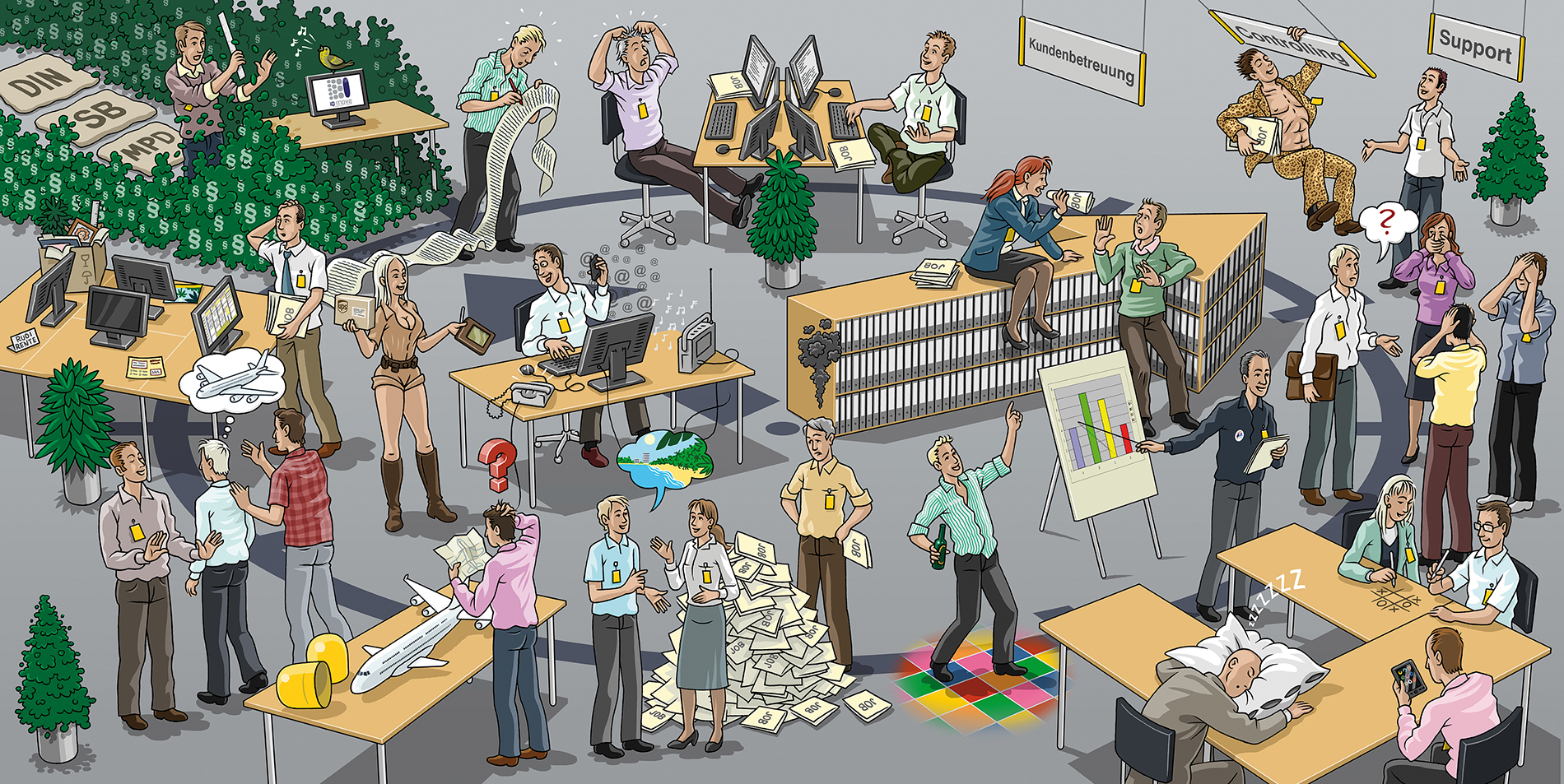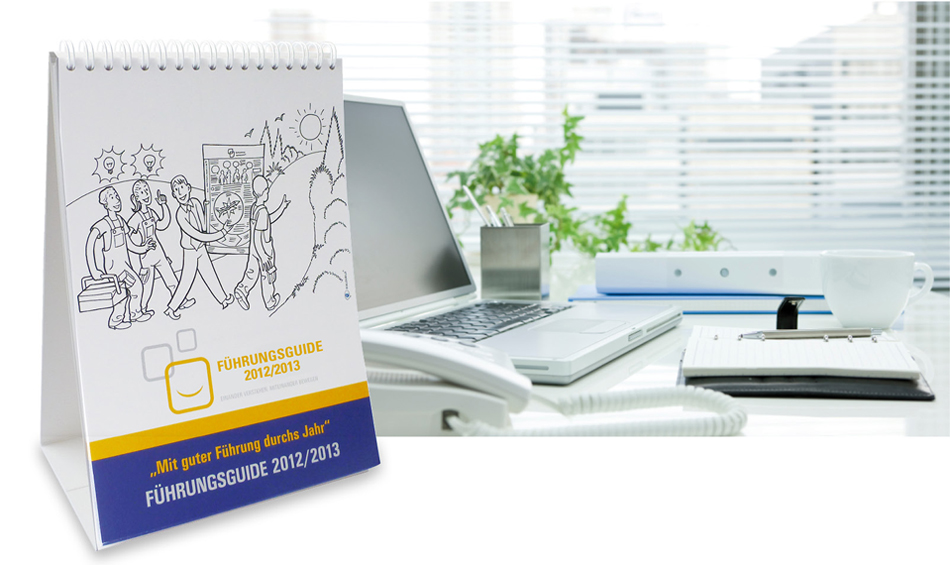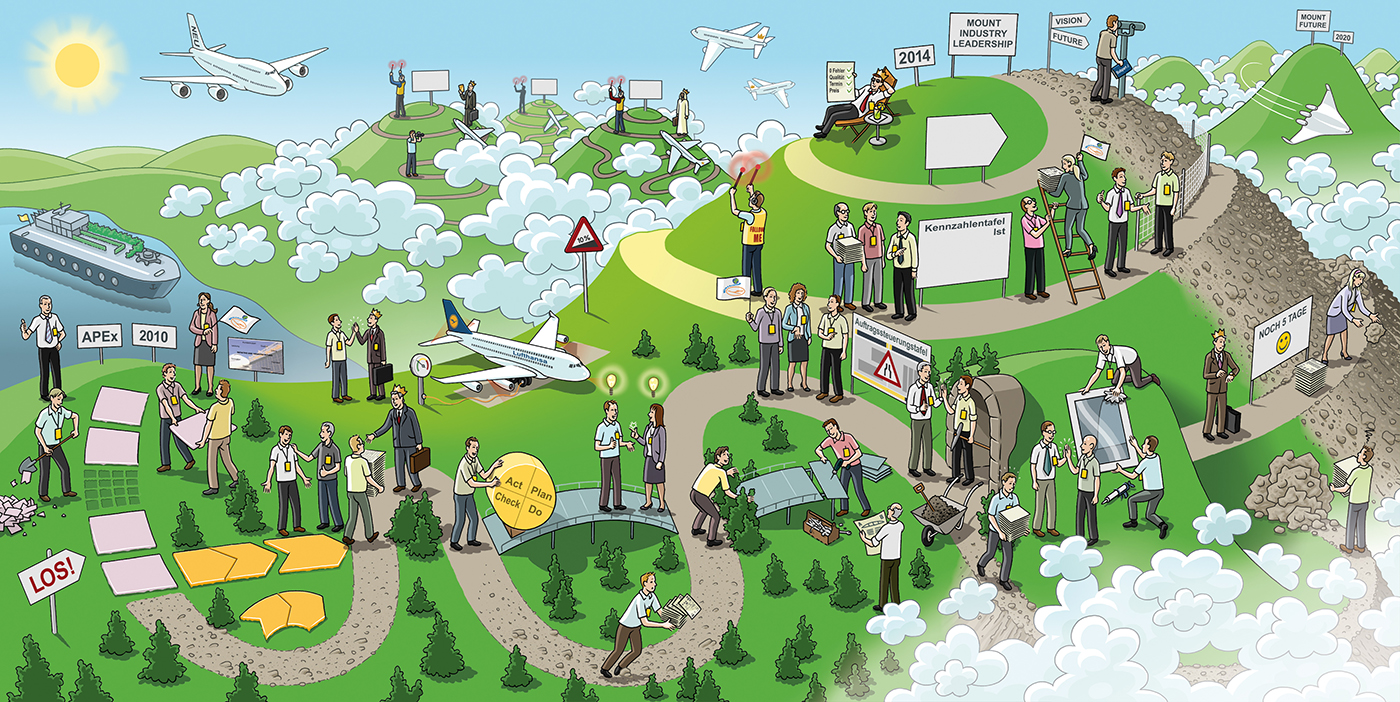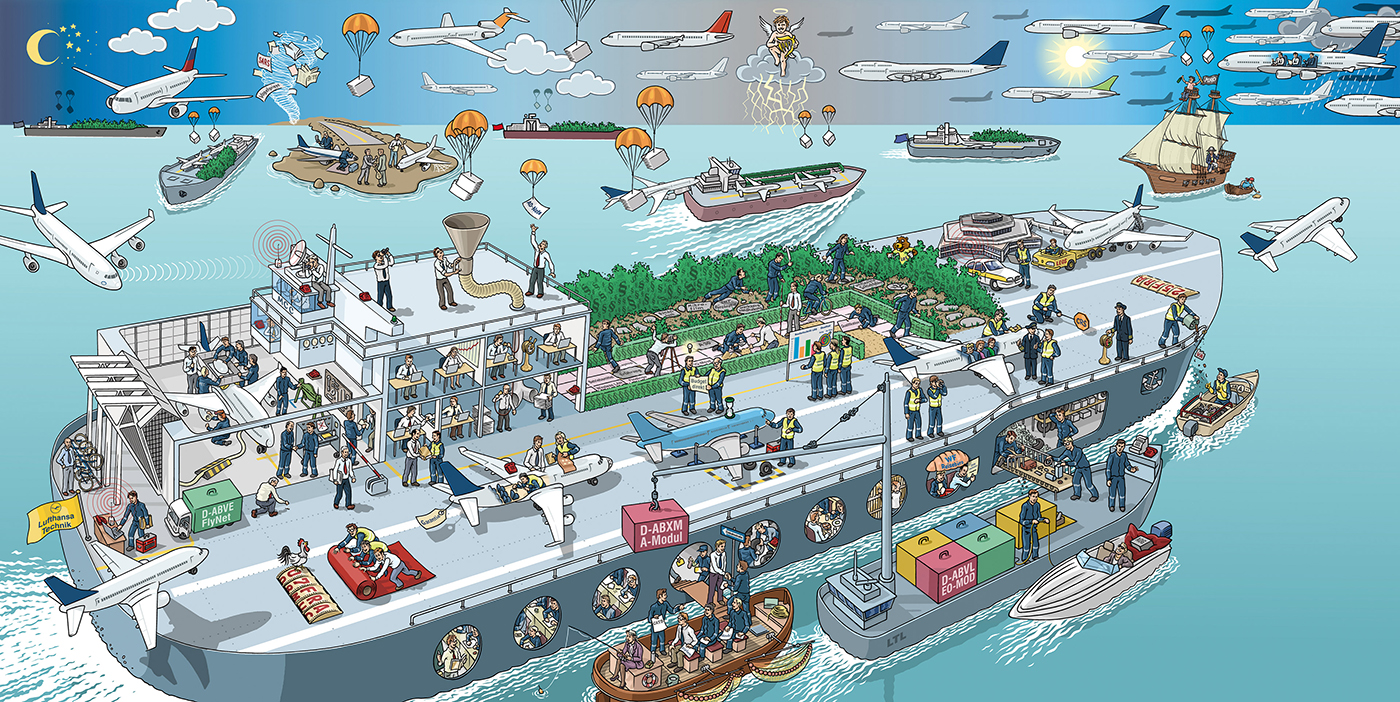Regarding human factors, the Dirty Dozen are often discussed as a frequent topic of the detrimental effects on work and possible sources of errors. For this the representation of the Dirty Dozen was redone to include administrative activities in the dialogue picture. A clock serves as the background with the number 12 pictorially representing how the 12 themes overlap one another and have no real hierarchy.
The 12 themes in summary
1. Pressure – Time pressure and psychological pressure
2. Complacency – “I can do everything and do not need anything or anyone to accomplish my tasks.“
3. Lack of Communication – listen, inquire, obtain
4. Lack of Attention
5. Exhaustion
6. Lack of Teamwork
7. Lack of Knowledge
8. Lack of Authority
9. Distractions – too many things at the work station
10. Lack of Resources
11. Regulations – clear allocation of tasks as processes by administration using all appropriate standards
12. Stress – external influences lead us toward one interpretation and one reaction
"In regular continuous training we make all employees aware of the effects of the „Dirty Dozen“ human factors. In the context of the current training the employees should recognize the influences and compare them with their own experiences. The dialogue picture is an alternative learning method helping to teach us about the topic in an interesting way. The employees recognize these situations in their daily work and so feel involved."
INDIVIDUAL SCENES AND THEIR MEANING
A large number of things at the work place can distract us: telephone, email, radio, post and many more.
A split image can be seen here in which after a night of partying one is extremely tired the following morning. In the same way, the job can also lead one to working on long lists, monotonously checking off numbered columns resulting in exhaustion.
The employee is being pushed by the hand of the clock (time pressure) and is moreover put under further pressure by directives from above (psychological pressure) shown by the boss yelling through a megaphone.
Two colleagues with identical workloads deal with it differently. One sits relaxed and cross-legged not letting anything disturb him while the other colleague is completely overwhelmed and tearing out his hair. This shows that stress is self-inflicted. External factors lead us to one perspective and one reaction.
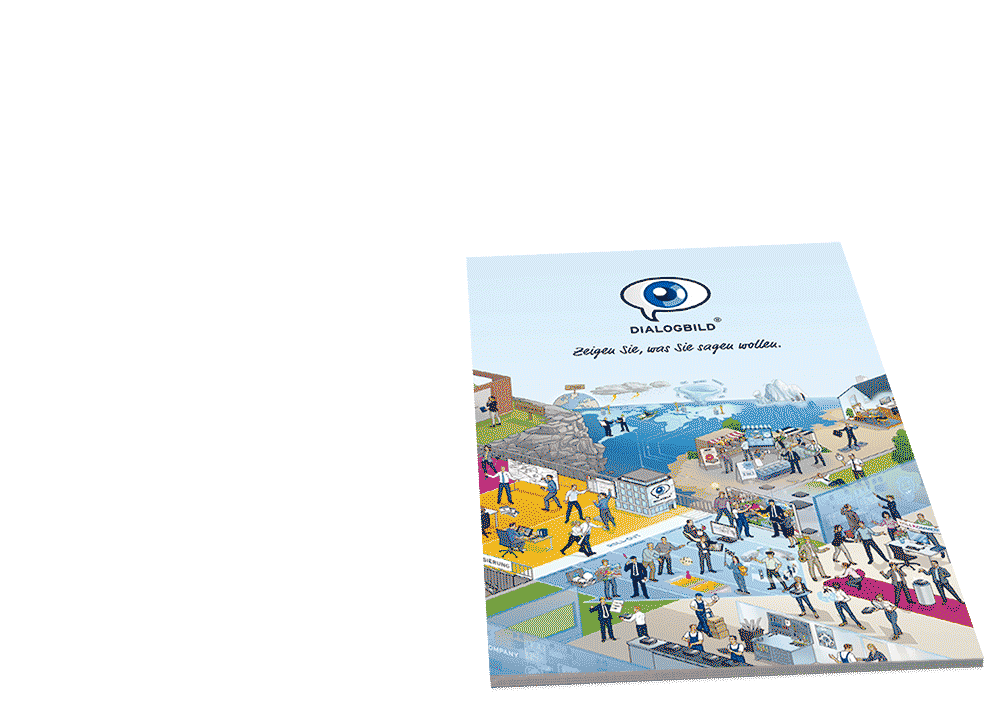 SELECT INFO PACKAGE
SELECT INFO PACKAGE